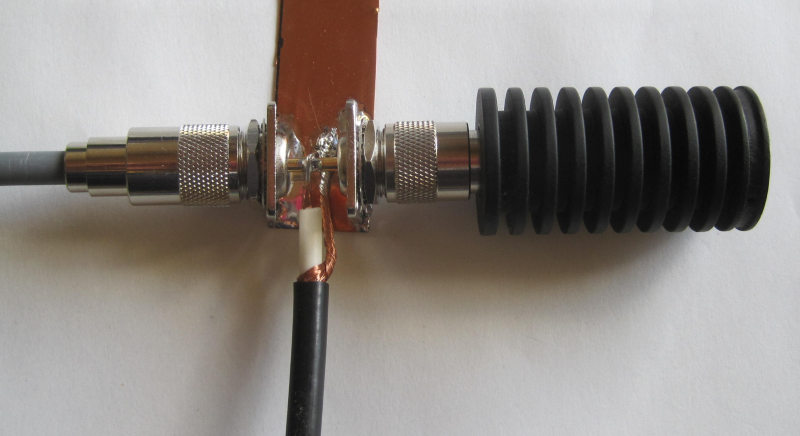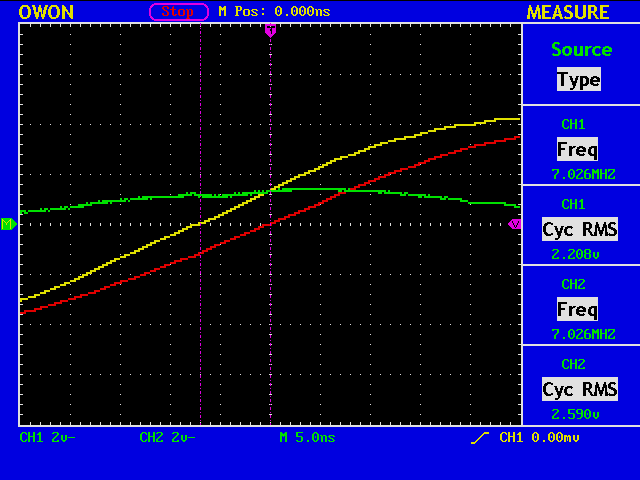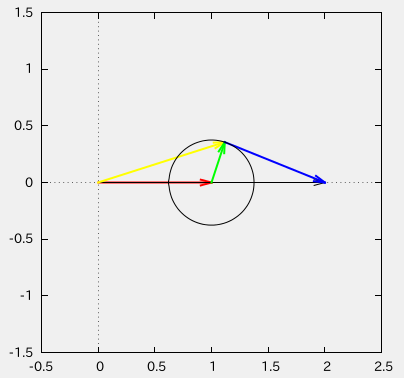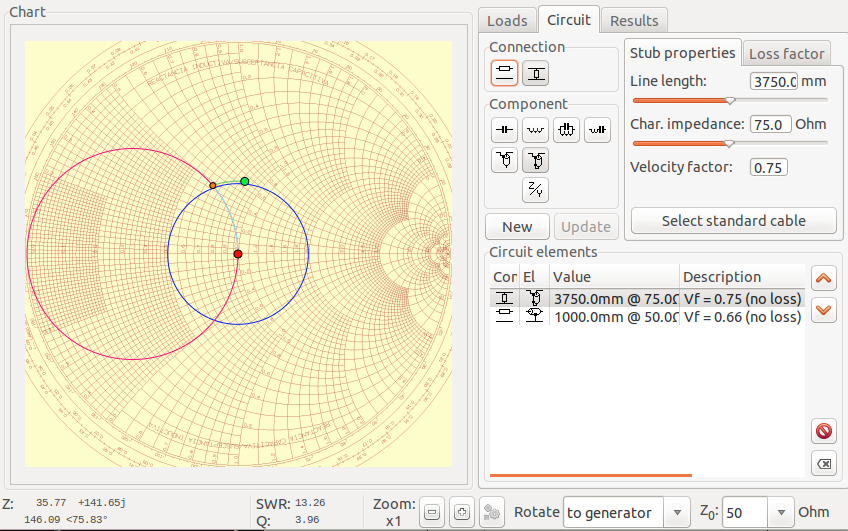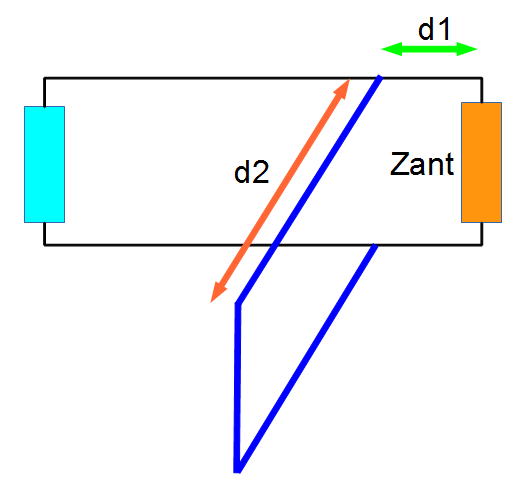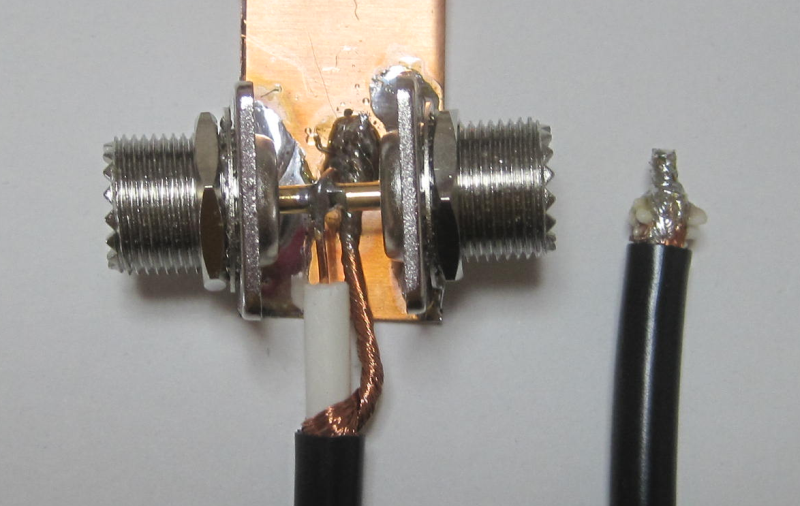A dummy load is connected to check how the stub is working. The black coax cable forms the stub section, and the gray cable goes to the transmitter.
gnuplot> load "gnuplot.txt"
Freq [MHz]=7.026
V1=2.208
V2=2.59
Cursor 1=7e-09
Cursor 2=0.0
vratio=1.17300724637681
phase1 [deg]=17.70552
phase2 [deg]=0.0
abs(gamma)=0.375575673213821
swr=2.20295016418356
cz={47.3942331949417, 39.368039298651}
The current length of the stub section using 5C-FV is around 3750mm, and there is a cable of length 1000mm between the impedance bridge and the stub. Assuming the velocity factor of 0.75 for 5C-FV, the expected impedance measured by the impedance bridge is 41.731+j32.604 ohm, which is in good agreement with the cz=47.394+j39.368 ohm.

